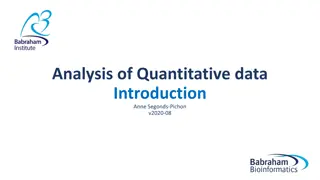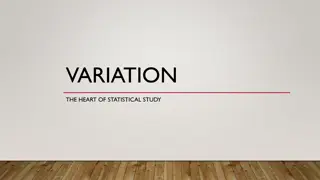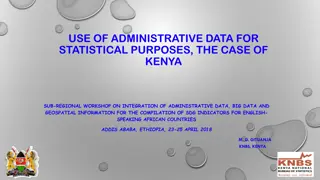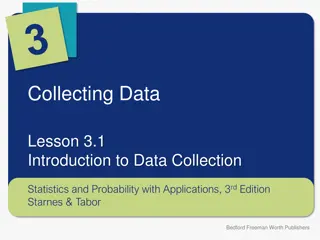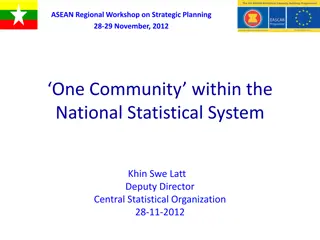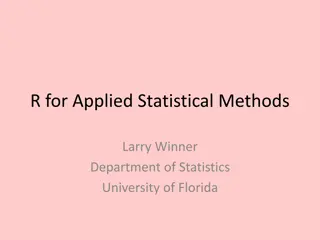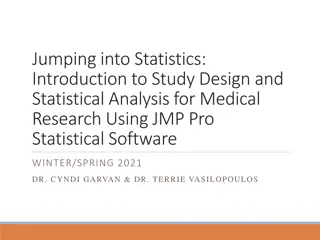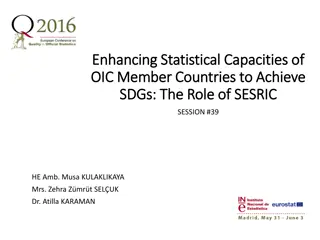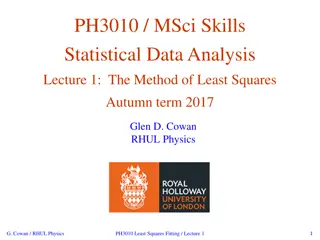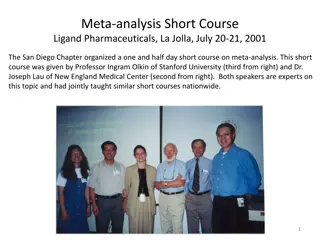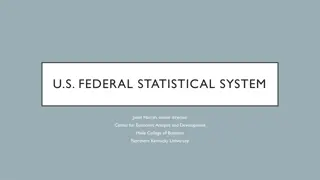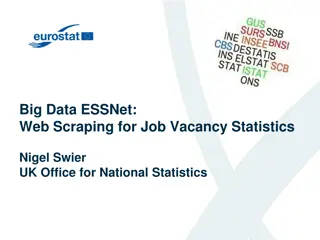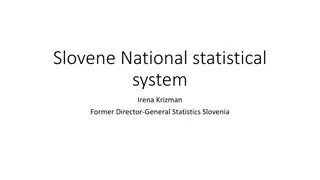Applied Statistical Analysis - Find Clarity Using Data
This review highlights methods for finding clarity in data analysis, including selecting the right statistical method based on research questions such as comparing groups or relationships among variables. It covers Z-tests, T-tests, ANOVAs, Chi-Square tests, regression, and correlation, explaining when to use each method and what they can reveal about the data. The content emphasizes the importance of understanding the purpose and nature of the research question to choose the appropriate statistical approach effectively.
Download Presentation

Please find below an Image/Link to download the presentation.
The content on the website is provided AS IS for your information and personal use only. It may not be sold, licensed, or shared on other websites without obtaining consent from the author.If you encounter any issues during the download, it is possible that the publisher has removed the file from their server.
You are allowed to download the files provided on this website for personal or commercial use, subject to the condition that they are used lawfully. All files are the property of their respective owners.
The content on the website is provided AS IS for your information and personal use only. It may not be sold, licensed, or shared on other websites without obtaining consent from the author.
E N D
Presentation Transcript
Applied Statistical Analysis EDUC 6050 Review Week Finding clarity using data
Today Connect the Methods 2
Selecting the Right Method 3
Selecting Method Based on Research Question Does research question have to do with looking at differences among groups or relationships among continuous variables? Z-tests T-tests ANOVAs Chi Square Regression Correlation Regression 4
Z-testscompare our sample to known values ANOVAscompare: 1) 3+ independent samples (groups) 2) 3+ repeated samples (time points) 3) Both groups and repeated samples at the same time t-testscompare: 1) Our sample to known values 2) Two independent samples (groups) 3) Two paired-samples (time points) Z-tests T-tests ANOVAs Chi Square Regression Regression compares: 1) 1+ categorical variable(s) 2) Controls for the effects of the covariates 3) Can also do a lot more... Chi Squarescompare: 1) 1 categorical variable to known values 2) 2 categorical variables 5
Z-testscompare our sample to known values ANOVAscompare: 1) 3+ independent samples (groups) 2) 3+ repeated samples (time points) 3) Both groups and repeated samples at the same time t-testscompare: 1) Our sample to known values 2) Two independent samples (groups) 3) Two paired-samples (time points) All but Chi Square has a continuous Z-tests T-tests ANOVAs Chi Square Regression outcome Regression compares: 1) 1+ categorical variable(s) 2) Controls for the effects of the covariates 3) Can also do a lot more... Chi Squarescompare: 1) 1 categorical variable to known values 2) 2 categorical variables 6
Correlationtells us the direction and magnitude of a relationship between two continuous variables Correlation Regression Regressiontells us the direction and magnitude (in the units of the outcome) of a relationship between two continuous variables (Can also have categorical variables in the model at the same time) 7
Correlationtells us the direction and magnitude of a relationship between two continuous variables Continuous outcomes Correlation Regression Regressiontells us the direction and magnitude (in the units of the outcome) of a relationship between two continuous variables (Can also have categorical variables in the model at the same time) 8
Selecting Method Based on Available Data - Outcome Is your outcome variable continuous (interval/ratio) or categorical (ordinal, nominal)? Z-tests T-tests ANOVAs Regression Logistic Regression Chi Square 9
Selecting Method Based on Available Data - IV Is your independent variable(s) continuous (interval/ratio) or categorical (ordinal, nominal)? Z-Tests T-Tests ANOVAs Chi Square Regression Logistic Regression Regression Logistic Regression 10
Question 1 We hypothesize that test scores are caused by amount of time studying and note-taking style. What approach could we use? 11
Question 2 We investigate the question of whether preferences for money/flying are different across degree types. What approach could we use? 12
Question 3 We want to know the relationship between poverty level (continuous) and teen birth rate (continuous). What approach could we use? 13
Question 4 We want to know if our intervention regarding adult mobility works. We have two groups (intervention and control) and test both groups at pretest and posttest. What approach could we use? 14
Interpreting the Results 15
Common Threads Across Methods 1.Test Statistic 2.P-Value 3.Effect Size 16
Common Threads Across Methods 1.Test Statistic 2.P-Value 3.Effect Size
Common Threads Across Methods 1.Test Statistic 2.P-Value 3.Effect Size 18
Unique Things The Estimate Model Comparisons 19
Question 5 Interpret the following output 20
Question 6 Interpret the following output 21
Question 7.1 Interpret the following output 22
Question 7.2 Interpret the following output 23
Next week: Final Exam :) 24


